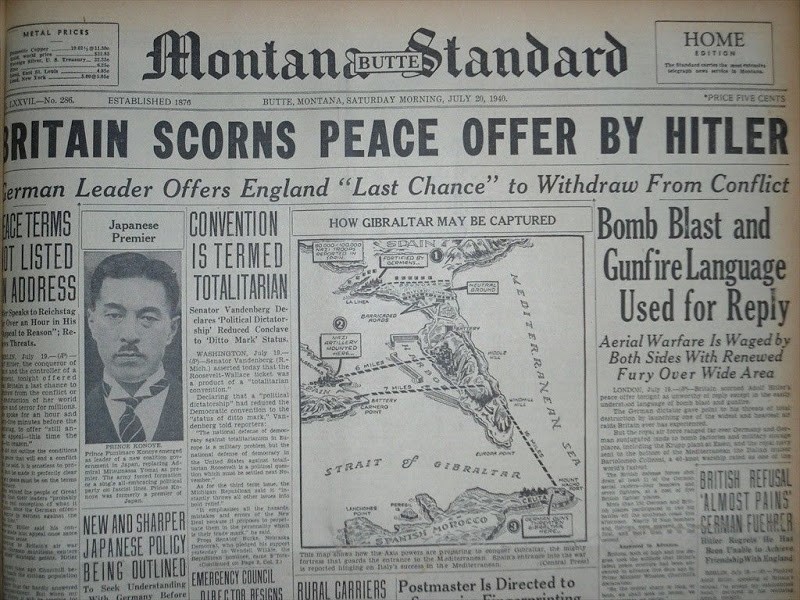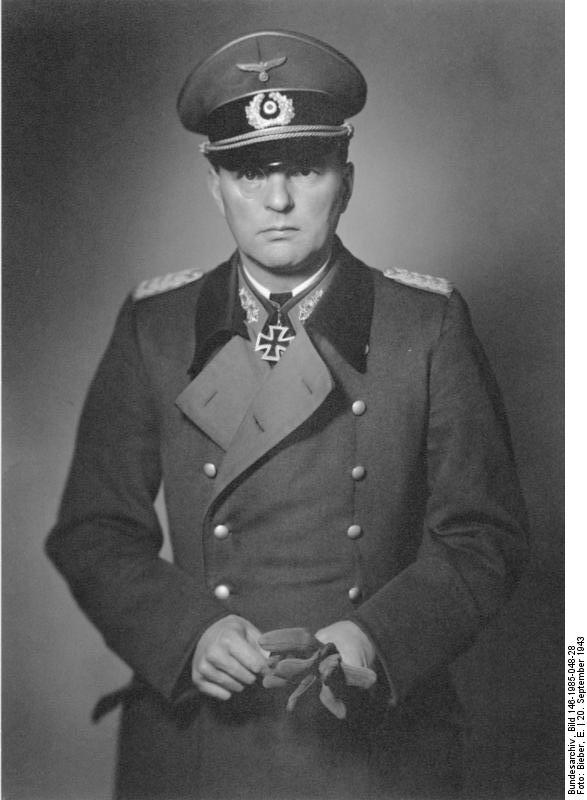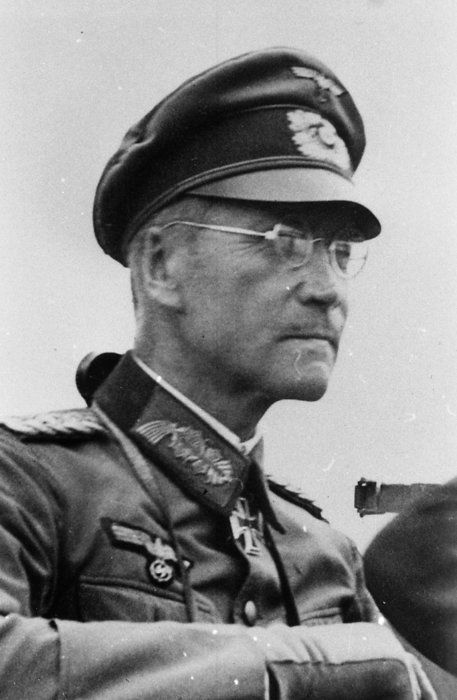THE GERMAN PLAN (MARCKS)
On 19 July 1940, after the conclusion of the extraordinary and unprecedented victories in the west achieved by German arms, Adolf Hitler was seriously attempting to end the war. He not only attained the objective of getting rid of the punishingly restrictive conditions of the Versailles Treaty, he accomplished much more. Germany was now a major world power, with a position comparable to that of Great Britain. A political or economic blockade could no longer force the Reich on its knees. Germany was master of its destiny…or so it seemed.
The speech he delivered on that day to the Reichstag, ending with an offer of peace to Great Britain, shows a Hitler pleased with the results achieved so far and overconfident on his leadership. He was unwilling to take more risks and was perfectly content with ending the war at that stage. It seemed to him that peace made sense. If the war ended now, he could inherit to his successor a mighty Germany while Great Britain could keep its empire. The continuation of the war was strongly against the interests of both states.
While in September 1939 Great Britain’s declaration of war was entirely logical from London’s point of view, in July of 1940 its extension was not. In 1939, Great Britain was opposing the resurgence of Germany and had on its side a cluster of powerful allies in the continent while Germany stood alone. Germany was also keenly vulnerable to blockade. Although nothing is certain in war, the odds favored Great Britain. In 1940, the tables had turned. England was alone, Germany had allies in Europe, and France along with Poland had been vanquished. Equally important, it had obtained vast territories in the continent that made Berlin significantly less exposed to a maritime blockade. Thus, Germany’s raw material condition was in control.
Hitler understood that Great Britain could still use its vast diplomatic skills to bring new allies on its side: The United States and potentially the USSR. Great Britain did just that in World War I when it convinced Washington to enter the war against Germany, and it also accomplished the feat 128 years earlier, when Russia helped Great Britain by defeating Napoleon. But the difference this time was that America and the USSR would not fight to save the British Empire for naught. The United Kingdom would have to pay a price for such help that under any circumstances would be steeper than reaching an agreement with Germany. After all, Germany had not demonstrated any interest in tearing down the British Empire. Future events would prove Hitler utterly wrong when during his speech he declared that in any continuation of the war Germany would be victorious, but he was correct when he said that the British Empire would cease to exist .
The rationale behind the decision to continue the war by the British leadership remains unclear to this day. While it is true that for centuries Great Britain’s foreign policy revolved around opposing the strongest nation in Europe to prevent it from becoming a serious competitor, in all the cases the assumption was that the Empire would become stronger, not weaker, by following such doctrine . When, after France’s defeat, Churchill geared the full might of the British Empire towards the destruction of Germany it was clear that this would benefit the United States and possibly the Soviet Union. Both nations understood that Great Britain would attempt to drag them into war because London lacked the power to defeat Germany alone. They would only do it if there was a sizable benefit to compensate for the mighty risk. The hypothesis that the Prime Minister decided to defeat the evilness of Germany for a higher moral purpose even if it meant sinking the British ship is weak. By the time Hitler offered peace, Stalin had spent years implementing his pogroms causing millions of innocents to die. Newspapers published horrifying stories of the Ukraine famine, so it was not a secret. Purges that started in 1937 and continued to that date were the cause of brutal murder, by the thousands, of party members, the military, and anyone thought to be averse to the regime. Families of the accused were in countless instances murdered as well. Stalin had invaded neutral countries and their intelligentsia sent to gulags or worse.
There have been excesses in Germany also, the Kristallnacht and the bloody suppression of the SA, but the scale of these events was of a different order of magnitude in comparison with the demonstrated brutality in the USSR. How could Churchill detect future evilness in Germany while at the same time he was incapable of recognizing present malevolence in the Soviet Union ?
Germany and Britain were Christian countries whereas the Soviet Union was an atheist state that did not allow freedom of religion. Berlin had tried for years to come to an agreement with Great Britain renouncing direct competition and even offering an alliance with the British Empire. On the other hand, Moscow was intent on a communist revolution to destroy the capitalist system. A rational analysis of national interests could easily explain why an agreement with Germany made sense. But it did not happen. Were Churchill’s actions dictated by hatred of Germany? Outlandish optimism that somehow Great Britain would be astute enough to beat the United States and the USSR at the end of the conflict? Blind confidence in the correctness of the long-established British doctrine of opposing the strongest nation in the continent?
It is not in the scope of this analysis to answer this question which deserves an objective answer by future researchers.
THE MARCKS PLAN FOOLS HITLER
On 20 July 1940, one day after Hitler’s peace offer, and before the British government officially responded, some newspapers announced the unqualified rebuff of any agreement with Germany .
Attentive to the foreign press reaction, Hitler understood that illogical as it may seem to him, fighting would continue. He, therefore, needed to keep searching for ways to win the war.
The United States, despite its industrial might, was incapable of raising a powerful land army able to challenge Germany in the shorter term. It would realistically take America years to do so, and even then, establishing a foothold on the continent to face an intact German army had low prospects of success . The help of the British would not change this. The main threat to Germany was not from that quarter. Only Soviet Russia had an army, already placed in Europe, with the strength to contest German power.
On 21 July, at the end of a conference with the German Army Commander in Chief, Walther von Brauchitsch, about the plan for invading the British Isles to force an end to the war, subject matter changed to assessing the magnitude of the Russian threat to Germany . Adolf Hitler requested his Field Marshal to submit a plan to defeat the USSR if necessity arose.
The request was pragmatic. Germany did not have an operational plan to invade the Soviet Union despite the anti-communist line of the Fuhrer and despite the proxy war Germany and the USSR fought in Spain between 1936 and 1939. No plan existed because a war with Russia was never in the realm of practical possibility while France remained an enemy. Once the French threat disappeared, Hitler could avoid a two-front continental war with major powers.
Although the Molotov-Ribbentrop pact signed the previous year patched the major differences between the two powers, new reasons for concern emerged. Stalin’s invasions of the Baltic States and Bessarabia, after the departure of the bulk of German forces to the western front upon Poland’s defeat, had a manifestly anti-German character by threatening German vital interests . Berlin felt deeply concerned.
After France’s destruction, Hitler knew that the Wehrmacht stood as the strongest and most professional army in the world, supported by a modern military-industrial complex, and in a dominant position in Europe. Berlin’s raw material position was vulnerable, but not in immediate danger since the German army was uncommitted, Germany had acquired valuable economic territories, and it imported other key raw materials from the USSR.
If Germany could defeat the Soviet Union, there would be 2 major benefits. First, for the foreseeable future, no army in the world would be capable of challenging the Wehrmacht in Europe. Second, Berlin would secure a solid raw material base that eliminated the risk of blockade from any quarter.
Provided that the destruction of the Soviet state was achievable, Germany’s position would be unassailable.
On the other hand, the invasion posed a mighty risk as well. The Soviet Union was an enormous country with a population that dwarfed Germany’s and it wielded the largest army in the world. If Germany could not defeat Russia in a lighting campaign, a protracted war could spiral out of control. The British maritime blockade augmented with the closure of imports from the east would be a severe blow to Germany’s raw material situation. British and American aid to the Russians could materialize in the form of munitions or even military bases to attack German targets. Sooner or later Germany would find itself in a precarious situation that could mean losing the war altogether.
Renewing the alliance with the USSR was the safest route: the German army was strong enough to deal with the British, while Russia could provide the necessary raw materials to complement the ones the Reich already obtained from the conquered territories.
However, it was not clear if that was possible. Stalin’s conquest of the Baltic States and Bessarabia threatened the loss of the two raw material centers that were indispensable for Germany. The iron ore mines in Kiruna and Malmberget in Sweden were but 100 km (60 miles) from the Finnish frontier and the Soviets appeared resolved to invade and annex Finland . After the invasion of Bessarabia, the Ploesti oilfields laid only 200 km (120 miles) from the Red Army and Air Force, situated east of the Prut River . Had Bucharest decided to resist Stalin’s 24-hour ultimatum, Moscow would have attacked and probably occupied all of Romania .
Losing Ploesti meant the incapability to sustain the Luftwaffe and seriously affected the mobility of the land armies; these refineries produced over 25% of the oil needs of Germany. The loss of the Swedish mines, in 1940, signified losing the ability to manufacture steel for munitions because these mines provided 27% of Germany’s pre-war iron requirement and imports from Spain and France that had stopped with the outbreak of war, represented another 18% . Thence, losing any of these two pivotal centers meant defeat, for Berlin did not have any other equivalent resource hubs as a backup. Clearly, the Third Reich’s government would have to take the necessary steps to safeguard them. Losing East Prussia would be less important.
Thus, it was important to establish quickly if Germany was potent enough to destroy the USSR in a lighting campaign. If it was not, then negotiations with the USSR, difficult as they might be, needed to happen to secure Berlin’s position. And if it was, Germany negotiating position would be strong. If worse came to worst, Germany could obtain with the force of arms what it could not obtain through negotiations.
During the discussion with Brauchitsch that day, the dictator’s position was strategically defensive: “to at least push back the Red Army so the oilfields and German industrial areas would be beyond air range” . The red air force was the largest in the world and theoretically, more than capable to cause considerable damage. This defensive posture indicates that on that date, there was uncertainty in the feasibility of crushing the Soviet state rapidly. However, during the meeting von Brauchitsch mentioned to Hitler that the Red Army could field only 50-75 good divisions while the Wehrmacht had 80-100, suggesting that conditions may be favorable in case drastic action was necessary . At that point, the discussion ended.
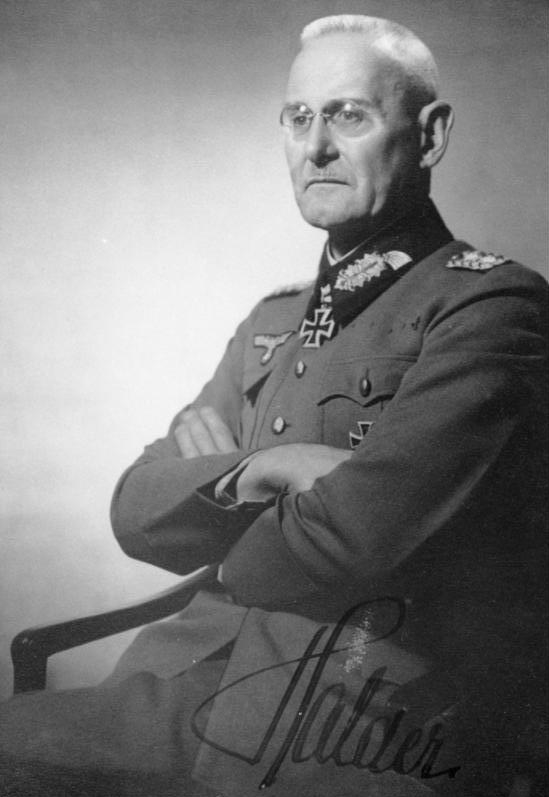
The next day, 22 July, Halifax officially rebuffed Hitler’s peace offer and von Brauchitsch asked Generaloberst Franz Halder, Chief of Staff of the Army Supreme Command (OKH), to start studying the potential invasion of Russia. Halder called Oberst Eberhard Kinzel, Chief of Intelligence Foreign Armies East to obtain a briefing on the Red Army. He then asked Oberst Hans von Greiffenberg, Deputy Operations Chief, to assign a good planner to study the campaign.
On 29 July, the OKH appointed Generalmajor Erich Marcks to carry out preliminary planning for the invasion. Marcks was Chief of Staff of the 18th Army, recently deployed to the east to prepare defensive plans in case of a Russian attack. The same day Generaloberst Alfred Jodl (OKW) had a conference with his staff where he informed them that planning for the invasion of Russia was to commence soon and that war with the USSR could precede the defeat of Great Britain, which incited some uneasiness on his staff because this would imply a two-front war by choice .
Adolf Hitler held an important conference in Berchtesgaden two days later, to review Seeloewe planning progress (the invasion of England), which had priority. If the Luftwaffe defeated the RAF in an operation planned to start in a fortnight (Unternehmen Adlerangriff), the invasion of the British Isles might be feasible obviating the need for an eastern campaign. During the conference, the Fuehrer stipulated to the army chiefs a critical prerequisite concerning the tentative operation in Russia: mindful of the risks that a two-front war involved, he stated that “the war would only make sense if Germany could beat the Soviet Union in one blow” . This was a crystal-clear request to the Commander in Chief to propose a plan that guaranteed complete victory in one fell swoop or else, state unequivocally that this was not feasible.
The following day, Halder and Marcks discussed the campaign to align viewpoints and on August 5th, Marcks presented his plan. It took the General just one week to come up with a thorough, high-level plan on how to defeat the Soviet Union.
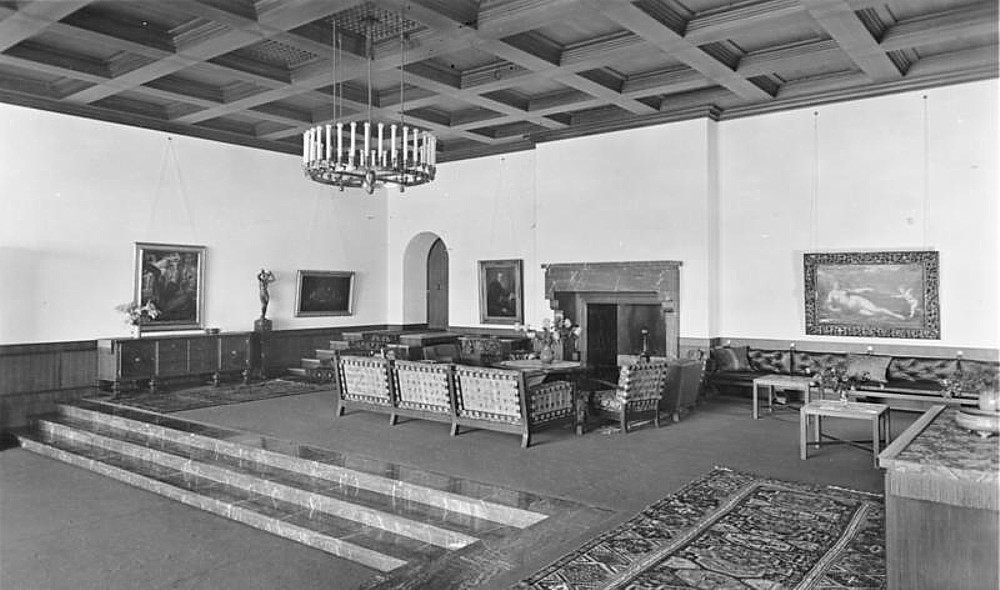
The preparation of these complex operational plans in the OKH was a 3-stage process (see next figure). Initially, the Intelligence Department, O Qu IV , produced a report with all relevant data on the enemy. The most vital information by far was the strength of the enemy since this information alone was the variable that affected the operational plan the most. If the enemy was rather weak, there was a lot of flexibility in the planning of the major operational maneuvers. The weaker the enemy, the more margin of error the final plan could absorb. If the enemy was very strong, the operations required careful planning and precise execution. If the enemy was exceedingly strong, the OKH could contra-indicate an attack and recommend a defensive posture instead.
The enemy’s strength depends on the size of its army, its reserves, and its capacity to raise new units . In this context, “army” means the overall land, naval and air forces.
The other vital information that completed the O Qu IV report consisted in the geographical deployment of the enemy’s forces, the location and importance of the opponent’s economic and military-industrial centers (which are fundamental for force generation), the impact of the country’s geography and weather on military operations, and the description of the adversary’s communication networks of military value. The latter was a geostatistical study of ports, railroads, and roads that tallied their positions with capacities.
The second stage started with the meticulous study of this information and ended with a preliminary operational plan to defeat the enemy. The Operations Department (O Qu I) had to present a plan that defined clearly the mission’s goals and the strength the German Army had to allocate to achieve those goals in the time required to accomplish them. The rest of the operational plan delves into the next-level details: the operational concept describing the conduct of operations to defeat the enemy; the selection of the point of main effort; the disposition of own troops on the front and the command arrangement of these forces (the allocation of the division to the corps, armies, and army groups). It also incorporated major operational instructions and tactics for the successful implementation of the plan.
Upon completion of this stage, the Operations Department provided to the Organization and Logistics Department (Gen Qu) certain variables that the latter required to prepare the logistics plan. These variables are the size of the attacking force, the expected depth of the penetration, the duration of the campaign, and the projected intensity of the engagements.
With these variables, the last stage could proceed: The Gen Qu Chief calculated the daily requirements of food, equipment, ammunition, POL (petroleum, oil, and lubricants) and other dry cargo that the troops would need. He then evaluated the required carrying capacity of the supply troops using railroads, road transportation, and ship-freight and he defined the distribution network (supply chain) necessary for the proper delivery of these supplies to the troops.
The entire process was iterative. If the operational plan proved impossible for the logisticians, modifications followed. Once the logistics plan matched the operations plan, the O Qu I Chief submitted the final plan to the Chief of Staff along with the assumptions provided by Intelligence. The Chief of Staff then approved or modified the plan if necessary.
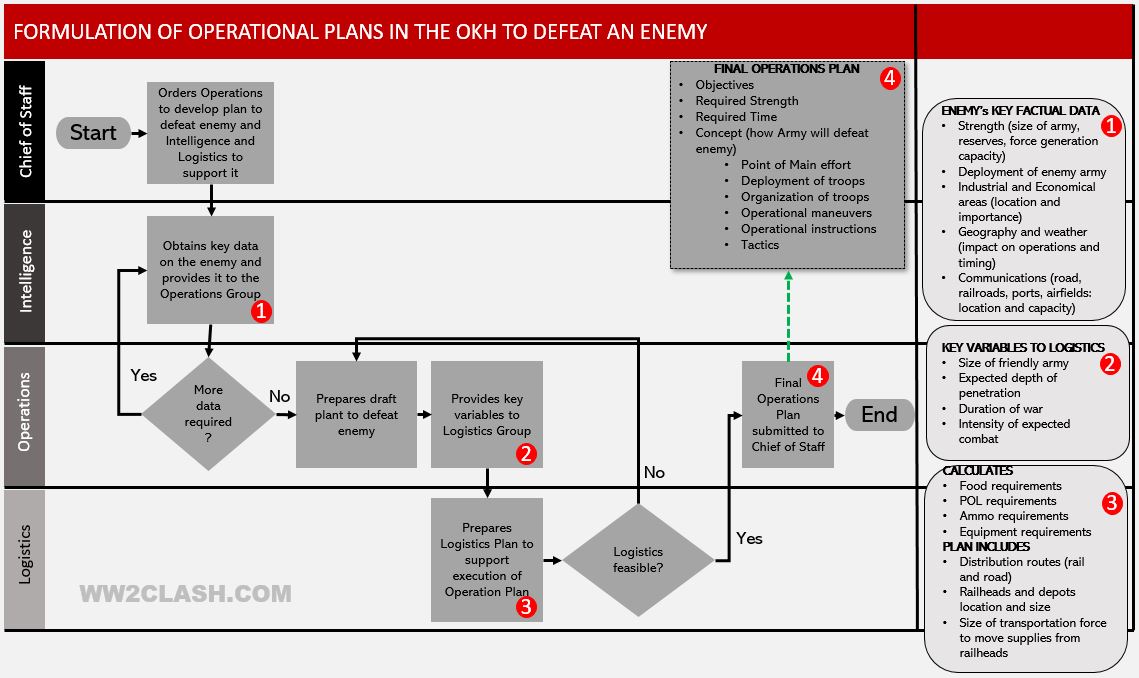
The plan drafted by Marcks on 5 August 1940 differed, at times significantly, from the final Barbarossa directive and its associated Army Operational Order, which spells in greater detail the implementation of the directive. However, it contained several critical postulates that Barbarossa accepted and that had a direct bearing in the decision of Hitler to invade the USSR and in the ultimate failure of the operation, so they require an explanation.
Crucially, Marcks accepted as true Kinzel’s estimate of the strength of the Red Army at 202 divisional-sized units (151 infantry divisions, 32 cavalry divisions, and 38 armored brigades ; the latter were the largest armored formation Kinzel thought the Red Army deployed ; each brigade was the size of half a division approximately).
From this force, Marcks expected that only 133 divisional equivalents (96 infantry divisions, 23 cavalry divisions, and 28 armored brigades) would be available against Germany. Since the OKH projected (by spring of 1941) a Wehrmacht strength for the operation of 147 divisions (24 armored, 12 motorized, 1 cavalry and 110 infantry divisions), it follows that he expected a favorable strength ratio for the German Army in the Russian theater of operations. His study did not anticipate large enemy’s reserves other than the balance of forces deployed facing Turkey, Japan, and Finland which could engage the invaders eventually. Nor did he contemplate the enemy’s capacity to generate new formations during the war.
Since he appraised the Wehrmacht as qualitatively superior to the Red Army the logical conclusion was that Germany would be able to defeat the Soviet Union.
However, German intelligence was utterly wrong. The actual strength of the Red Army when Germany invaded stood at 304 divisions and thanks to the large pool of trained reservist and weapon stocks, the Soviets raised altogether 821 divisional equivalents up to 31 December 1941 .
The magnitude of the error in the German estimate was enormous, the actual strength of the Soviet army was 4 times the anticipated by Kinzel, and this reflects a catastrophic failure of the OKH planning process, the weak link being military intelligence. This would not be the first time the intelligence apparatus failed Germany in. During the Battle of Britain, that was about to start, German intelligence significantly underestimated Britain’s industrial capacity to manufacture aircraft and overestimated British losses. The result was the inability to appreciate that Britain’s air strength was increasing and not diminishing .
The method to devise a war plan can be likened, conceptually, to the one an engineer would use to design a new bridge: the most important variable is the load the bridge will carry. If the load selected is too small in comparison with actual conditions, the constructed bridge may fail and collapse. The underestimated “load” (or size of the Red Army) by a factor of 4 would have devastating consequences, because based on it, Marcks convinced the German army not only that the operation’s chances of success were exceptionally high but also that there were conditions for completing the campaign quickly: Marcks estimated that the destruction of the Red Army would require between 9 and 17 weeks. The most favorable season for operations was from mid-May to mid-October, or 5 months, more than enough time to bring the campaign to a conclusion in one blow.
These two erroneous conclusions: that the German Army was powerful enough to defeat the moderately sized Red Army and that everything would be over in short summer campaign quickly found their way to the Fuehrer, fostering in the dictator the notion that Germany possessed a powerful sword capable to solve the Russian question once and for all.
The main goals of the Marcks plan, by Halder’s briefing, were to destroy the Red Army and to prevent its regeneration, thereby eliminating the threat to Germany for the conceivable future. O Qu IV had identified Moscow, Leningrad, and Ukraine (including the Donets Basin) as the main economical-industrial centers so Marcks proposed to seize all territory west of the line Archangelsk-Gorki- Rostov. This area contained the bulk of the population and industrial centers of the enemy, thereby ensuring, in his view, that the Soviet state would lose the potential to conduct war effectively. A second benefit of reaching this line was that all German industrial centers, including the all-important Ploesti oilfields, would remain out of range from bombing attacks while the Luftwaffe would be able to bomb the remaining industrial centers in the Urals.
The OKH never contemplated the possibility that the Russians would evacuate their industry to the east , and this miscalculation, while not as important as the first two, became the third most important blunder in the plan because the occupation of these provinces by the Germans did not remove the Soviet capacity to continue waging a high-intensity war.
Marcks then focused his attention on the operative aspects of the invasion. Since the blitzkrieg concept required mobility to achieve victory, he pondered over the selection of suitable terrain for the main axes of advance. Intelligence had correctly identified the large Pripet Marshes in southern Belorussia and northwest Ukraine as dividing the front in a northern and a southern sector, so he recommended two Army Groups, one to the north and one to the south of the marshes and assigned the northern force the mission of carrying out the main effort. He assumed that the Red Army would split its forces into two groups of about the same size to defend the northern and southern areas; this assumption proved to be correct in the main. The southern sector, composed almost exclusively of steppe land devoid of woods, is quite suitable for mobile operations, except for the numerous river crossings that an attacker from the west would face one after the other: the Prut, the Dniester, the Dnieper, the Donets, the Don, and the Volga rivers. All of them flow from North to South and are imposing defensive barriers by themselves.
In addition to its aptness for mobile warfare, the lack of suitable terrain for protection against air attack and German expected control of the air meant that the Wehrmacht had the advantage in this area, making it a fitting candidate as the main axis of advance.
However, to the problem of consecutive river barriers delaying the advance , two other factors reduced the attractiveness of this sector to the planners: the lack of east-west roads that reduced mobility and hence the speed of advance with only one very good road, Brest-Litovsk-Kiev, and the fact that an attack from Romania would lack a sound supply base for a very large army group. The reason was that the rail and road networks of that country were underdeveloped (and farther from German supply centers) and in the control of the hosting country which meant possible friction and higher risk. Although there was the alternative to launch a southern attack from the well-developed Brest-Litovsk-Jaroslav area to avoid a frontal attack against the Prut and Dniester Rivers, the frontage was too narrow for a full weight attack.
The northern sector is densely forested. Large woodlands around Brest-Litovsk, from Minks to Orsha, around Gomel and Bryansk, southwest of Moscow, and along the Lovat and Volkhov Rivers, from roughly Velikiye Luki to Lake Ladoga and to the east of these rivers provide ideal terrain to the defense . Since forest-fighting reduces the speed of advance, the attacks had to avoid these forests as much as possible.
However, the northern sector had a much better east-west road network towards Moscow and Leningrad which helped a rapid advance. Also, the Germans had control over Poland, and they could improve the road and rail networks to implement a solid supply base closer to German provision centers. Because the projected depth of the penetration was huge a suitable supply network was not only desirable but a prerequisite for success .
Despite the more difficult terrain, the latter two factors weighed more heavily on Marcks’s decision for the selection of the northern route as the most appropriate for the point of main effort. Still, he had to decide if the center of gravity would point towards Leningrad or Moscow.
In the direction of Leningrad, the Germans would face consecutively the Neman, the Dvina, the Velikaia, the Volkhov, and the Lovat river crossings. Besides, Intelligence identified huge forests and swamps from the White Sea past Leningrad through Vitebsk (see next map, this area is identified in green). The better-suited terrain towards Moscow and the importance of the capital city, which the Russians would defend with their last reserves, convinced Marcks that this should be the main axis of advance. After all, the objective was the destruction of the Red Army.
Nevertheless, he contemplated a secondary thrust in the direction of Leningrad to negate ports to the Red Navy in the Baltic. This would eliminate the Russian fleet from the order of battle and would convert the Baltic in a German lake, securing the supply of Swedish iron ore through the Gulf of Bothnia and improving the supply situation of Army Group North. The German planners knew that the Soviet railroad network, vital for supply, was of a different gauge (width) than the German and they organized its conversion. They also realized that this task would require significant effort and loss of time, so the capture of ports would ease considerably the logistical burden.
The advance proper contemplated three axes: two armies (6th and 4th) in the direction of Moscow, the main axis, one army (18th) in the direction of Leningrad, and 2 armies (16th and 12th) towards Kiev and the mid-Dnieper River, carried out in 4 phases. The first phase was a penetration of 400Km that would last 3 weeks with the Russians fighting a delaying action. The second phase was the achievement of the main breakthrough forcing the river crossings of the Dvina to the north and the Dnieper to the south and a struggle across forested areas. This implied a penetration of 200 km and would take 2 to 4 weeks. The third phase would be the seizing of Moscow and Leningrad with the destruction of the last Red Army formations to achieve victory. The worst-case scenario, he thought, was that after phase 2, the red army still presented a solid defense. In this case, it would be necessary to stop and resupply before the commencement of phase 3. Therefore, this phase would take anywhere from 3 to 6 weeks and would require covering another 400km of ground. Consequently, Marcks contemplated the destruction of the Red Army, not on the frontier but over a depth of 1000 km.
The last phase was the pursuit of any enemy remnants until the German troops seized the Rostov-Gorky-Archangelsk line. This 4th phase would last 2 to 4 weeks and implied a penetration of an additional 800km by mobile troops.
Halder felt satisfied with this first high-level study and on 3 September, he ordered the newly appointed Chief of Operations (O Qu I), Generalmajor Friedrich Paulus, the further development and refinement of the plan.
With hindsight, it is evident that the feasibility of these operations rested squarely on the assumptions of moderate Red Army’s strength and its low regeneration capacity. Since these assessments proved completely mistaken, the planned operations themselves became imprudently optimistic.
General Marcks discussed his plan with General der Cavallerie Ernst Koestring, the German military attaché in Moscow who disagreed with the conclusion that the capture of Moscow would be decisive. Even without the capital city, he cautioned, the Russians possessed vast industrial resources in the Urals. Additionally, thanks to their capacity for improvisation, they could reorganize their transportation network without Moscow. Despite his warnings, Halder and Marcks failed to make any amendments to the plan, giving more credit to Kinzel’s quantitative information than to Koestring qualitative opinion, which, without the benefit of retrospection, is understandable.
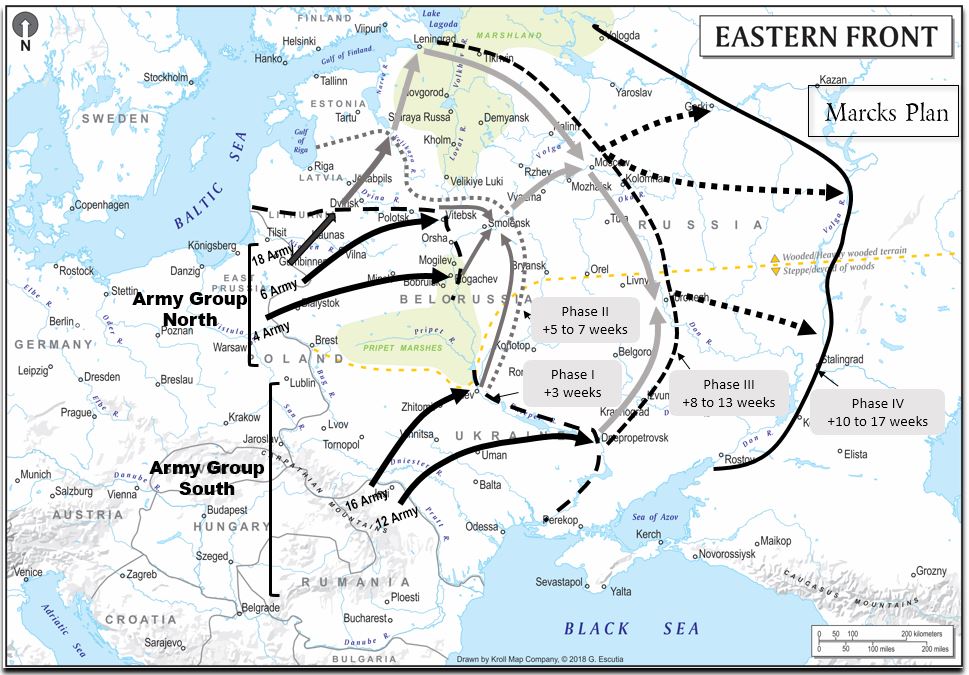
The German approach to devise an operational plan was logical and rational, but it rested in a linear process chain. The failure of any single element had the potential of spoiling the whole plan.
The OKH could have implemented a process to critically scrutinize the assumptions and to integrate differing views to prepare worst-case, what-if scenarios. After all, the implications of mistakes or errors in the planning process could result in losing the war. The asymmetric characteristics of the whole military decision-making process deserve consideration with utmost care: if one variable, say the strength of the Red Army, turned mistaken in one direction (it was weaker than expected), wasteful activities may occur, but these would not detract from achieving victory. If, on the other hand, the error was in the opposite direction (enemy stronger than expected), the negative consequences could be so devastating as to lead to the destruction of your country. Given the nefarious consequences of using incorrect assumptions, the importance of having high-quality intelligence and backup plans is a major learning experience when planning military operations. The first provides a sound foundation for planning and the second confers protection against the unavoidable errors in the assumptions. Astoundingly, this was a talent that the German Army High Command lacked at the time.
